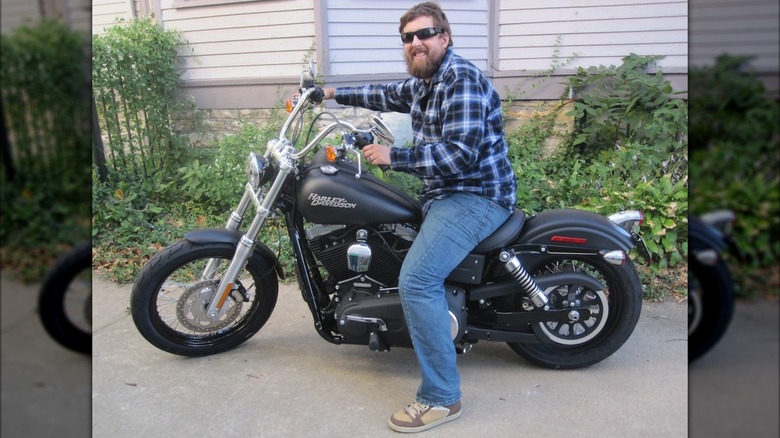Do You Need To Warm Up Your Harley-Davidson's Engine Before Riding?
Older folks living in cold-weather climates always heeded the sage advice of warming up your automobile before driving, just to "get the juices flowing." Equally as important was allowing the car's heater to remove the bite from freezing seats and the defroster to work its melty magic on windshield ice. Or at least that was once the prevailing thought, back when vehicles still used carburetors instead of fancy fuel injection.
Otherwise, you'd face the wrath of the angry metal beast, surely stalling out. However, that's no longer the case because fuel injectors operate on a different principle (they don't rely on precise fuel-air mixtures) and therefore don't require more than a handful of seconds before they're ready and raring to go. Plus, given how pricey gasoline is today, no one can afford to simply let it go to waste with needless idling (one of several bad habits making you spend more on gas). But what about motorcycles, and in particular, a Harley-Davidson? Well, the exact same advice applies.
Those equipped with carburetors should still be warmed up before roaring off, but bikes with fuel injection simply don't require it. As for the old adage about allowing time for the oil to properly circulate, according to the official owner's manual for a 2023 H-D touring model (under "Starting the Engine"), it explicitly states, "The engine should be allowed to run slowly for 15-30 seconds. This will allow the engine to warm up and let oil reach all surfaces needing lubrication. Failure to comply can result in engine damage."
Warming newer engines too long can make them go boom
Another thing to consider is whether the bike is filled with synthetic oil, which doesn't thicken up in cold weather. Conventional oil, on the other hand, does require more time to move through the engine and lubricate vital components. However, aside from wasting gas, letting modern bike engines idle too long can lead to carbon buildup and backfiring. Oh, and another myth that gets busted by the owner's manual is that you don't need to roll the throttle before starting the engine.
Older bikes with carburetors, however, absolutely need those vital extra minutes to dial in the precise fuel-to-air ratios. Much like an automobile, speeding past the warm-up stage (or bypassing it altogether) will become quite noticeable when you go to rev the throttle and — the engine cuts out on you. This hiccup is caused by the vaporized gas still clinging to internal parts, which only gets burned off as the engine heats up. Sure, you can always apply the choke to restrict air intake and raise the fuel ratio, but why bother when letting it warm up a few more minutes eliminates that extra step? Ultimately, though, both carburetors and fuel injectors have their pros and cons.
Additionally, not allowing carburetor engines to warm up properly may cause them to work harder, which could lead to increased wear and tear, as well as damage from thermally induced stress. As always, it's best to carefully read through the manual that came with your particular Harley-Davidson, because no one wants to gamble with such an expensive piece of machinery.

